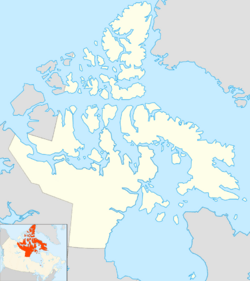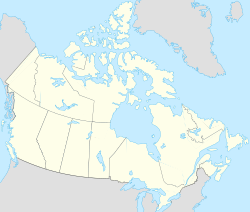Qikiqtaryuaq (Bathurst Inlet) facts for kids
| Geography | |
|---|---|
| Location | Bathurst Inlet |
| Coordinates | 67°55′34″N 108°07′16″W / 67.92611°N 108.12111°W |
| Archipelago | Arctic Archipelago |
| Administration | |
|
Canada
|
|
| Territory | Nunavut |
| Region | Kitikmeot |
| Demographics | |
| Population | Uninhabited |
Qikiqtaryuaq is an island located in the northern part of Canada. It used to be called Fishers Island. This island is part of the Arctic Archipelago, which is a huge group of islands in the Arctic Ocean. Qikiqtaryuaq is found in the Kitikmeot Region of Nunavut, a large territory in Canada.
Contents
Where is Qikiqtaryuaq Located?
Qikiqtaryuaq is specifically located in a place called Bathurst Inlet. This inlet is a long, narrow arm of the sea that reaches into the land. It's a very remote and cold area.
Nearby Islands in Bathurst Inlet
Qikiqtaryuaq is not alone in Bathurst Inlet. It has several island neighbors. These include:
These islands are all part of the same unique Arctic environment.
What Does "Uninhabited" Mean?
Qikiqtaryuaq is an uninhabited island. This means that no people live there permanently. Many islands in the Arctic are uninhabited because the weather is extremely cold and harsh. It can be very difficult for people to survive there without special equipment and supplies.
Life on Uninhabited Islands
Even though people don't live on Qikiqtaryuaq, it doesn't mean the island is empty. Uninhabited islands can be home to many types of wildlife. In the Arctic, this might include polar bears, seals, and various birds. These animals are adapted to live in cold environments.
Qikiqtaryuaq is a small part of the much larger Arctic Archipelago. This archipelago includes thousands of islands. It covers a vast area of northern Canada.
Nunavut is the largest and northernmost territory of Canada. It was created in 1999. Most of the people who live in Nunavut are Inuit, who are the Indigenous people of the Arctic. They have lived in this region for thousands of years. Nunavut is known for its vast, untouched landscapes and unique wildlife.



